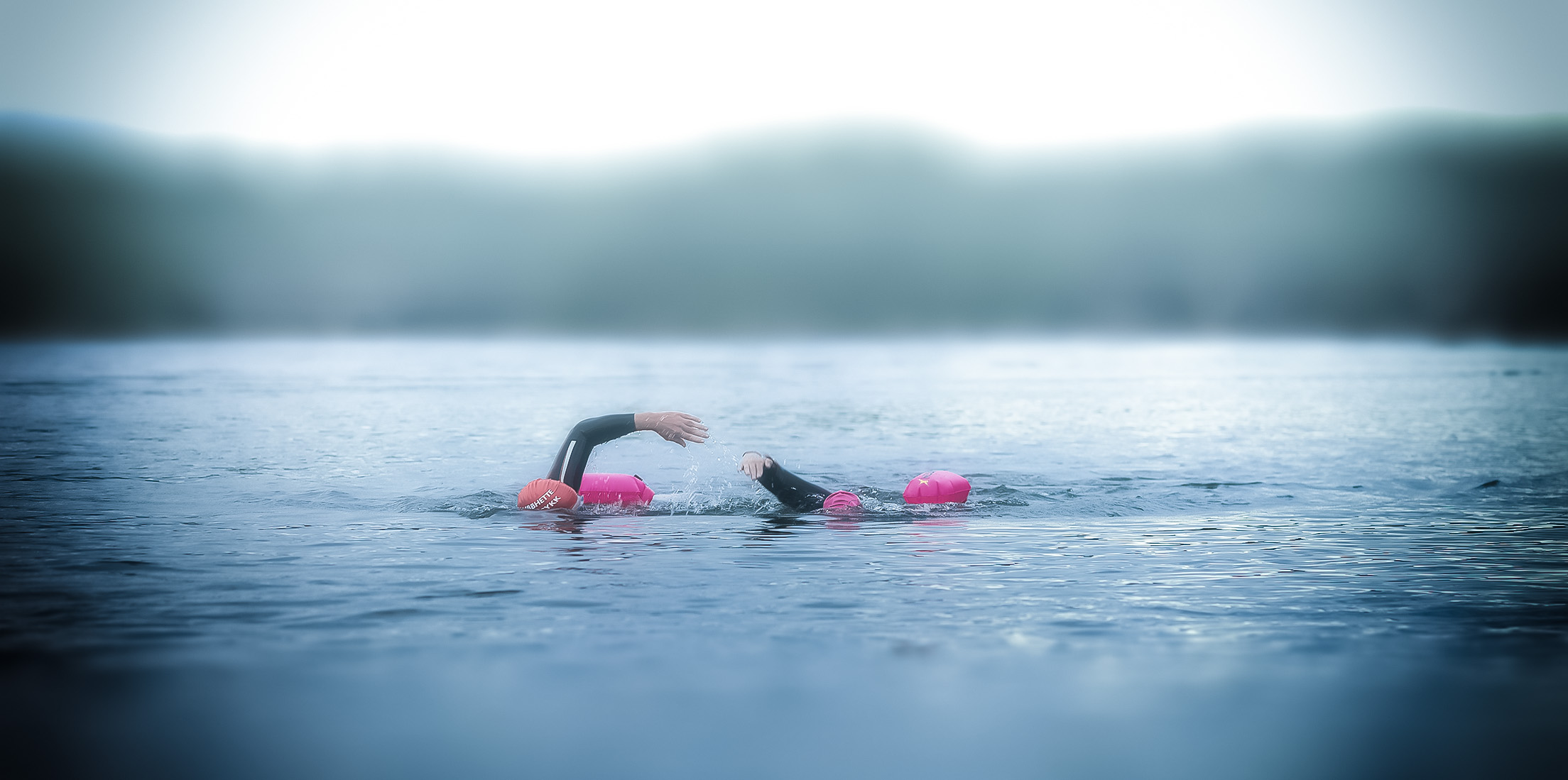
Safety and wild swims
We spend a lot of time facilitating safe and great wild swim experiences. Sentral to this are the general Open Water safety rules. Take the time to get to know them!
How Cold Water Affects Swimmers and Triathletes
The GlommaDyppen community not only facilitates great outdoor swimming experiences but also invests significant effort into making these experiences as safe as possible. Over several years, we have collaborated with researchers from Akershus University Hospital, Oslo University Hospital, the University of Oslo, the Norwegian Armed Forces, and SINTEF to develop new knowledge about how cold-water swimming affects the body.
How does dexterity change at different water temperatures?
The first scientific article from this collaboration has now been published. In this study, we investigated how swimming in cold water affects the dexterity of swimmers wearing wetsuits. Our goal was to understand how cold water influences the ability to use one’s hands effectively — something that is important for swimmers and triathletes during both training and competitions. The study included nine open water swimmers, both men and women, who completed multiple swims in open water with temperatures ranging from 8.4°C to 24.5°C.
We measured how long it took for the swimmers to complete a simple task requiring manual dexterity assembling a nut and bolt. The task took longer to complete as the water temperature decreased. For each degree drop in temperature, the time required to complete the task increased by approximately one second.
This finding is significant enough that swimmers and triathletes should consider its implications. For swimmers, colder water means it takes longer to remove wetsuits and put on dry clothes after finishing their swim. Other tasks requiring good manual dexterity will also take longer. This is perhaps even more relevant for triathletes who need to prepare for a bike ride after swimming. Event organizers should also take this knowledge into account when planning safety measures for both competitions and training sessions.
Would you like to read more? Here is a link to the published article
How does core body temperature change at different water temperatures?
The second scientific article from this collaboration looks at how the core body temperature of wetsuit swimmers changes during open water swimming. The participants swam in water of various temperatures, ranging from 8.4°C to 24.5°C. What we found was quite interesting: core temperature often followed a three-phase pattern after the swimmers entered the water:
-
First, we often saw a slight increase in core temperature
-
This was followed by a period where the temperature remained relatively stable
-
Finally, in many cases, the core temperature began to drop — and this happened more quickly in colder water
Important things to keep in mind:
-
Even with a wetsuit, you can get cold when swimming in open water — especially in cold conditions
-
In water between 8.4°C and 15°C, it took an average of about 20 minutes before core temperature started to drop. But keep in mind — some swimmers began cooling down even earlier!
Swimmers with more body fat appeared to be slightly better protected against the drop in temperature. And those who started the swim with a higher core temperature also tended to stay warmer for longer.
As the study shows, there are significant individual differences in how the body responds to cold water. Still, there are some clear takeaways: When the water is 15°C or colder, many swimmers begin to cool down after just 20 minutes — even when wearing a wetsuit. Both swimmers and triathletes should take this into account when planning the length of their swims.
Experienced swimmers often know how their own body reacts in cold water. But for newer swimmers — and for experienced swimmers bringing less experienced friends along — this can be valuable knowledge when assessing risk. It’s also important information for organizers to include in their safety planning for both training sessions and competitions.
Would you like to read more? Here is a link to the published article
Swimming in cold water
Open water is a relatively new sport in Norway. However, triathlon has been active for well over 40 years, and in addition, some of the most eager ones have spent a lot of time researching swimming in cold water. We are more than happy to recommend visiting Isklar Norseman Xtreme Triathlon’s pages on the topic..
SIPE
Unfortunately, the outdoor swimming community in Norway is not yet very aware of SIPE (Swimming Induced Pulmonary Edema). But it is well known both by a number of divers and in the triathlon community. However, among organizers of outdoor swimming events in Sweden this is very well known, and Vansbrosimning discovers around 50 cases annually. We have summarized some of the information we received from them during a study visit in the summer of 2018.
Risk analysis and safety plan
As organizers we prepare and update a safety plan annually. Before this is finalized, we carry out a detailed risk analysis. Actions are then taken to reduce the risk of various incidents as much as we can. Get in touch if you would like to take a look at this part of our work.
